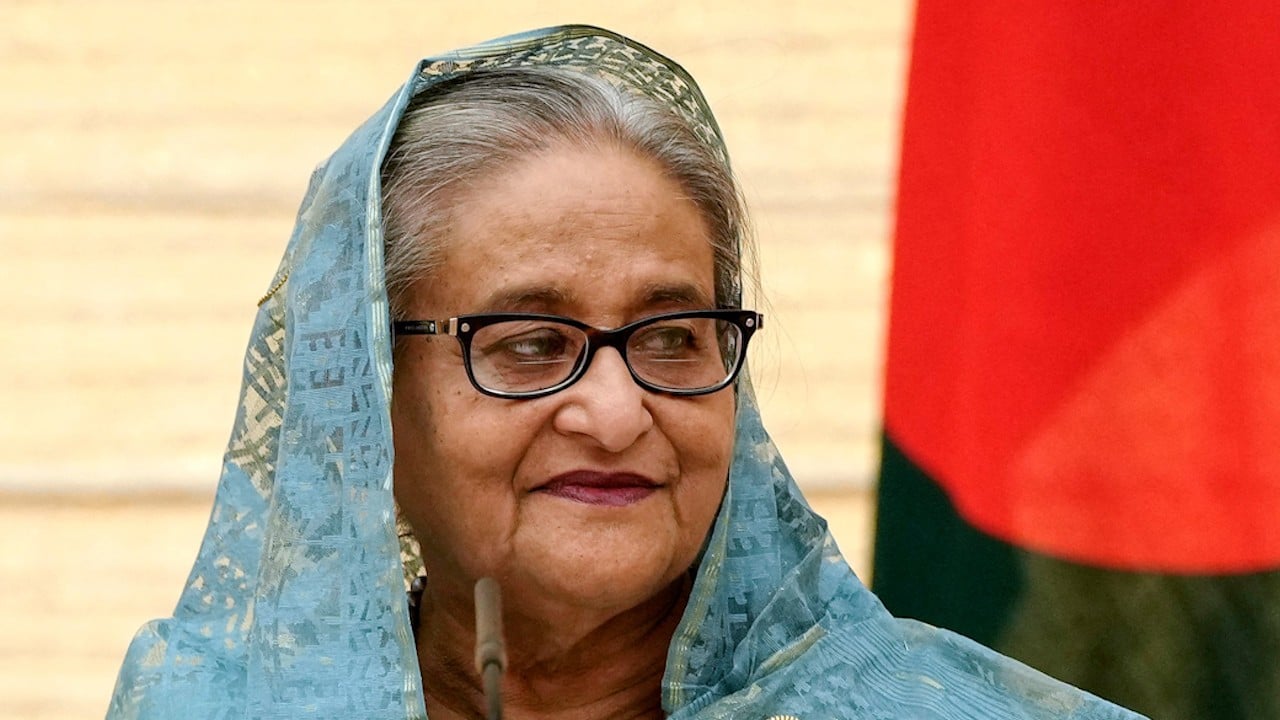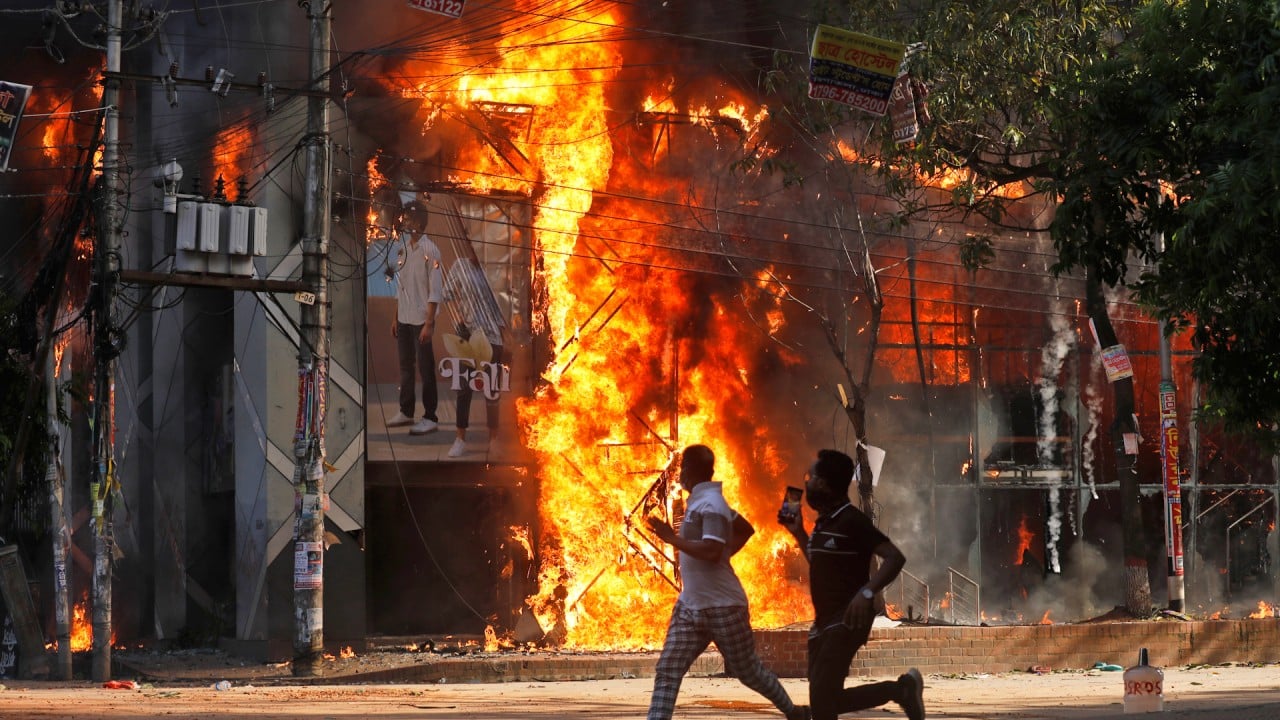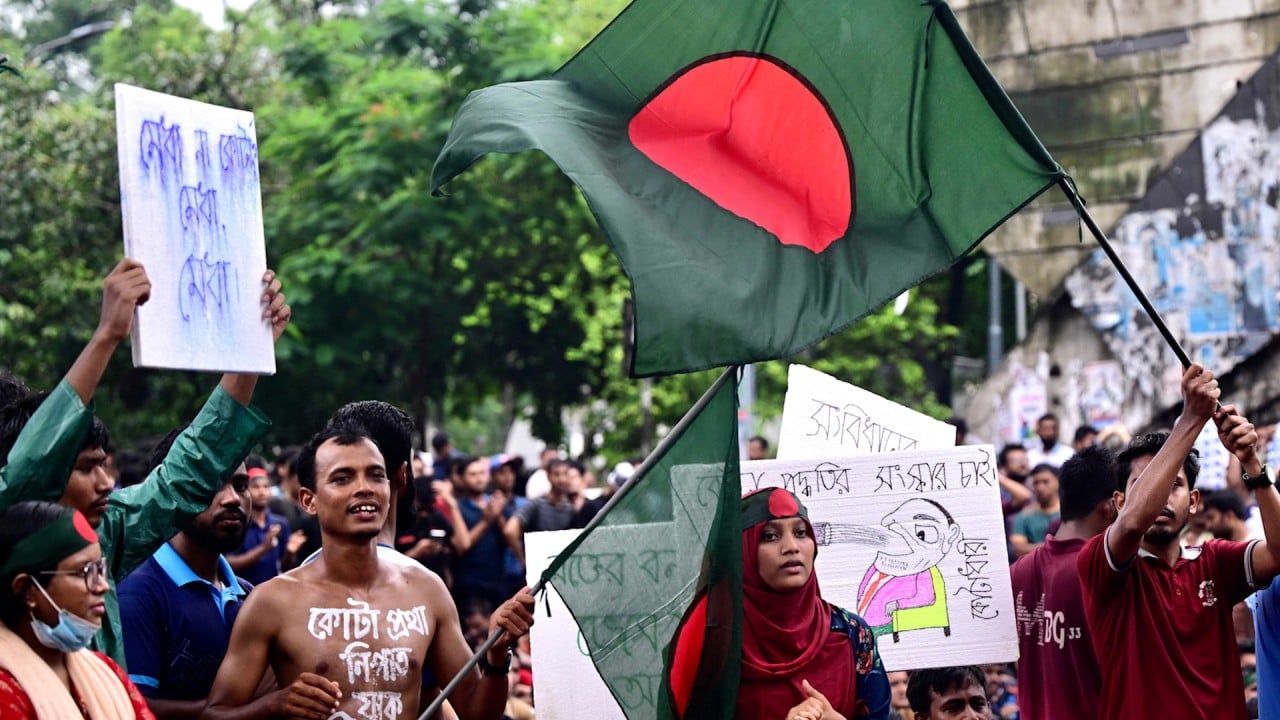Creditor China ‘closely monitors’ conditions in post-Hasina, debt-heavy Bangladesh
In a short statement on Tuesday night, the Chinese foreign ministry said Beijing was “closely monitoring the situation in Bangladesh”.
“As a friendly neighbour and comprehensive strategic partner, China sincerely hopes that Bangladesh will restore social stability at an early date,” it said.
China is the third biggest bilateral creditor to Bangladesh following Japan and Russia, and Dhaka had more than US$5 billion in outstanding loans to Beijing by the end of 2023, according to the Dhaka-based Daily Star newspaper.
There was no direct public response from China to the requests, but Beijing did offer 1 billion yuan (US$140 million) in economic assistance, according to the Bangladeshi foreign ministry.
Lin Minwang, deputy director of the Centre for South Asian Studies at Shanghai’s Fudan University, said Hasina’s resignation raised uncertainty over Bangladesh’s repayment capacity. It was also not clear what the policy of the country’s next administration would be towards Beijing.
“China has supported the Hasina government over the years, and Hasina has harshly suppressed the opposition Bangladesh Nationalist Party. Assuming the BNP comes to power again, China’s past support for Hasina may upset it,” Lin said.
Nevertheless, Lin said, the BNP had traditionally been friendlier to Pakistan and China than to India.
The World Bank said on Monday that it was assessing the impact of events in Bangladesh on its loan programme with the country.
Bangladesh’s external debt exceeded US$100 billion for the first time last year, with US$19.53 billion owed to the World Bank, according to The Daily Star. It was also repaying US$251 million in interest to China per year.
Jayant Menon, a former ADB lead economist, said it was too early to say how the political turmoil in Bangladesh would affect its repayment of loans to China, “but it would appear to have no real effect, at the moment”.
“These are sovereign obligations that any new government will have to honour, if it is to retain credibility in global financial markets,” said Menon, who is now a senior fellow at the ISEAS–Yusof Ishak Institute in Singapore.
At the same time, China is under high pressure to breathe new life into its economy, which lost momentum in the second quarter as a property crisis dragged on.
China has been one of the major funding providers to developing nations. According to AidData, China gave US$1.34 trillion dollars in grants and loans for nearly 20,000 projects in 165 low-income and middle-income countries between 2000 and 2021.
Some countries have also turned to China as US Federal Reserve rate rises have sent up interest rates in the global financial markets, increasing US dollar-denominated debt repayments for low-income countries.
But has been seen to become increasingly cautious in lending overseas, shifting the focus of its Belt and Road Initiative from big spending on infrastructure to smaller, “high-quality” projects.
Bangladesh is the second country in South Asia in two years to have gone through such a political crisis. Three months after a government default in 2022, then-Sri Lankan president Gotabaya Rajapaksa – whose family is seen as Beijing-friendly – resigned amid economic and political chaos. In the months following, Colombo sought an agreement with major creditor nations, including China to restructure its US$10 billion in bilateral debt.
But Pang Zhongying, an international affairs professor at Sichuan University, said the situation in Bangladesh was different.
“The economic situation in Bangladesh is not that bad yet, though it may have its own problems, which will be blamed on Hasina.”
Additional reporting by Laura Zhou


